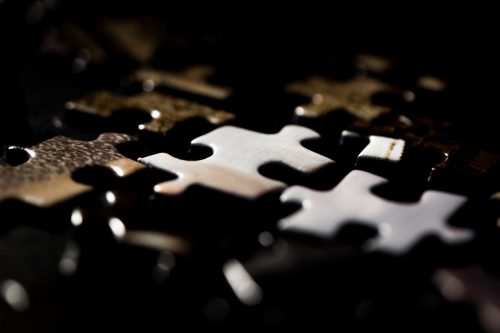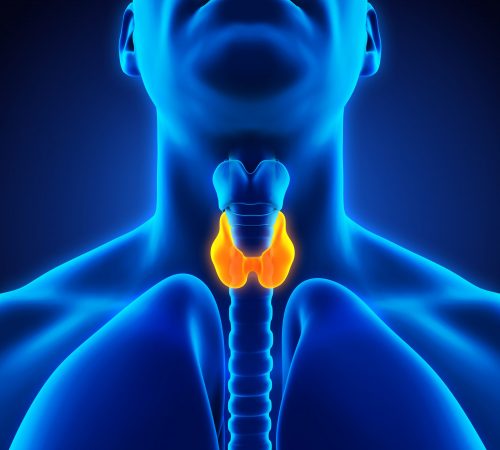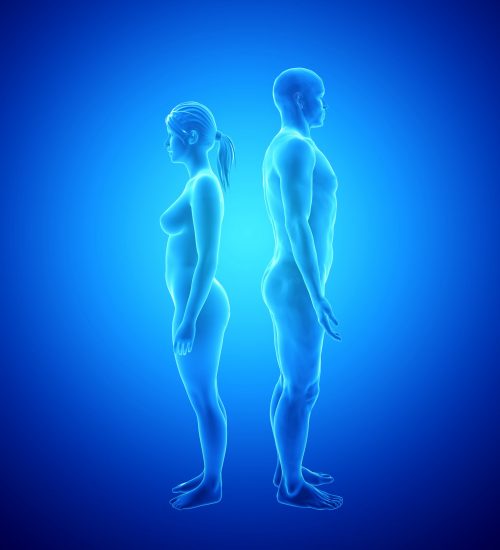The Mysteries Of HCG & It’s Many Uses

“You don’t need hCG unless you’re trying to conceive” bellows the endocrinologist. “There is no evidence to suggest a man should ever use a female pregnancy hormone, it only exists in you when you have testicular cancer!” he exclaims.
Perhaps that’s theatrical, but anecdotal experiences indicate that this is often how a patient’s suggestion of using hCG alongside their TRT is received among most ‘modern’ practicing endocrinologists. Maybe not always, but it does happen.
Sadly it seems that many men who are new to the realms of Testosterone Replacement Therapy (TRT), will end up down the route of NOT being prescribed hCG by their doctor. Now this is totally understandable if they cannot tolerate it, as some can’t, but for the vast majority of men who can, it’s pretty damn important (even if you have had your testicles removed or damaged). It’s not just a female hormone, nor is it only to be used when trying to conceive, it’s much more than that and this article will talk you through why.
The Basics – What Is HCG & Why Should I Care?
Both men and women have small amounts of Human Chorionic Gonadotropin, or hCG, in their body at all times, although it’s more well known for its maternal recognition of pregnancy. The trophoblast cells that surround a growing embryo produce it, so naturally, pregnancy tests were developed to detect it’s presence… Two lines and you’re pregnant! (if you’re a biological female).
Many in the TRT community will know that hCG also has it’s place in TRT for the treatment of hypogonadism. How so? Well, hCG is comprised of an alpha and beta subunit (α, & β, respectively). Luteinising hormone (LH) and hCG share an identical α-subunit, though the β differs – it can potentially attach to the Follicle Stimulating Hormone (FSH) receptor 1. Under normal eugondal conditions, the hypothalamus of your brain will secrete Gonadotropin-releasing hormone (GnRH). GnRH then stimulates the anterior portion of the pituitary gland in the brain to produce LH and FSH, which then stimulate the Leydig cells of the testes, via the LH and FSH receptors, to ultimately produce oestrogen and testosterone. They of course play a large role in spermatogenesis too. Testosterone and Oestradiol are then detected at the pituitary gland and hypothalamus in a negative feedback loop, making it reduce the output of GnRH and LH and FSH. FSH primarily stimulates the Sertoli cells of the testes, which produce inhibin and inhibit the pituitary gland from producing FSH.
The HPTA feedback system is probably easier to understand with a diagram, so look at Figure 1 below:
Figure 1 – HPTA feedback system, sourced from ASHI (click for full-size image)
In response to LH, the testes don’t just produce Testosterone, they also produce and secrete other hormones. That includes Progesterone, DHEA, Androstenedione, Pregnenolone, and more. These are all hormones which are also important for other functions in your body. Unfortunately, Testosterone monotherapy has a negative feedback to both the hypothalamus and pituitary, causing suppression of these normal signalling mechanisms. LH and FSH are no longer produced, and so hCG is prescribed in their absence.
So, in TRT the clear role of hCG is two-fold:
- Promote normal testicular steroidogenesis activity
- Continue spermatogenesis (though this improves with the addition of FSH)
Why should you care though if you’re on TRT already and don’t care to have kids? Simple, because those other hormones are pretty damn important. Yes, your adrenal glands make them, but not nearly anywhere as much as the testes.
What do they do? Let’s break it down – but bear in mind that the literature is sparse and understudied.
Progesterone
Progesterone is a neurosteroid and a neuroactive steroid; that is, it plays a role in the brain. It can cross the blood-brain-barrier to go to the brain. Progesterone classically exerts its effects via the progesterone receptor. Unfortunately, it’s relatively understudied in males, particularly at a clinical and non-animal model. Nonetheless, studies do demonstrate that it plays a significant role in maintaining a healthy brain in both women and men who are healthy or otherwise 2–4. In animal models, progesterone demonstrates that it plays an important role in the recovery of Traumatic Brain Injury too 5. Whether this translates to Humans or not will require additional studying.
DHEA-S
DHEA-S is a protective anabolic hormone. It has antioxidant activity and can help in neuronal preservation, thus is ergogenic to cognition. That is, it’s good for your brain. It may well be associated with executive function and memory 6. Although, we can’t say this with a large degree of confidence in men as studies are a bit unclear; more studies are needed.
Pregnenolone
The precursor to all steroid hormones. Pregnenolone helps improve mood; in well-designed studies using men with bi-polar disorder, it have been shown to reduce and improve depressive symptoms 7. It also reduces perceived pain, as shown in a randomized control trial with Army veterans who had lower back pain; pregnenolone reduced perceived pain in a clinically meaningful manner 8. The hormone is well known to play important roles in cognition, improving mood, and reducing pain .
Irrespective, the additional hormones produced by the testes are incredibly important. LH in particular does act upon LH receptors (LHR) in the central and peripheral nervous system. LH, and more so hCG (which can bind to LHRs) can be neuroprotective, as shown in neonates; it can protect against the effect of hypoxic-ischemic injuries 9. That therefore suggests that hCG is neuroprotective and thus good for your brain, at least if you’re neonatal. Animal models though similarly demonstrate protective effects against Aβ plaque formation, while decreasing cytochrome c-immunoreactive neuron density in the brain 10. If you aren’t a brain scientist (who isn’t?) then that basically means it may well be protective against Alzheimer’s diseases, and again demonstrates that it can be neuroprotective. However, and a big however, excess doses show the opposite effect in animal models 10. We see impaired cognitive function among women with polycystic ovary syndrome (PCOS) too, where there is a suggested causative factor; high LH 11. Can this be translated to men? Most likely, but the level of LH is significantly greater than normal and it’s clear that physiologically normal levels are also important for normal brain function and protection against damage, nonetheless. This really reinforces the notion that you need to work within physiologically appropriate doses, and it also reinforces the need for microdosing versus bolus dosing, which causes large peaks and troughs.
It’s also possible hCG may help those with spinal cord injuries 12. Further reinforcing the scientific data suggesting that hCG can help in alleviating pain (as previously mentioned), hCG has shown demonstrable improvements in reducing pain and restoration of function in those with adhesive arachnoiditis, alongside other severe pain problems, as reported anecdotally by clinicians 13. Again, one study demonstrated a pain reduction in 75% of patients using hCG, and clinicians are observing a reduced need for opioids among pain patients 14.
HCG Conclusion – What Have We Learned?
So, based on the literature, we could state the following about hCG:
- It may well help alleviate pain; there is certainly data to support this.
- It is important to maintain normal hormonal health and general testicular activity. It may stimulate normal adrenal gland activity, too 15.
- It may well be neuroprotective in appropriate physiological doses, and help with preventing Alzheimer’s disease development, but not progression. However, too much can have the opposite effect.
- It maintains fertility.
- It’s still important for those without fertility concerns or testes for reasons 3 and 1. The central and peripheral activity of hCG are very likely to be too beneficial to miss, granted you would require a lower dose.
So, that’s a lot of if’s, mays, and maybes. There’s some further studying required, but it has been the consistent finding of many clinicians, including The Men’s Health Clinic, that hCG is often an invaluable tool in improving patient outcomes when prescribed alongside Testosterone Replacement Therapy. That includes the above points made. Not every man can tolerate hCG without anxiety issues, but for many, it’s too important to forgo. If you have testes, the need is even greater; do not skip on it.
References
- Lee JA, Ramasamy R. Indications for the use of human chorionic gonadotropic hormone for the management of infertility in hypogonadal men. Transl Androl Urol. 2018;7(Suppl 3):S348-S352. doi:10.21037/tau.2018.04.11
- Singh M, Su C. Progesterone and neuroprotection. Horm Behav. 2013;63(2):284-290. doi:10.1016/j.yhbeh.2012.06.003
- Henderson VW. Progesterone and human cognition. Climacteric. 2018;21(4):333-340. doi:10.1080/13697137.2018.1476484
- Champagne J, Lakis N, Bourque J, Stip E, Lipp O, Mendrek A. Progesterone and Cerebral Function during Emotion Processing in Men and Women with Schizophrenia. Schizophr Res Treatment. 2012;2012:1-6. doi:10.1155/2012/917901
- Espinoza TR, Wright DW, Glenn MB. The role of progesterone in traumatic brain injury. J Head Trauma Rehabil. 2011;26(6):497-499. doi:10.1097/HTR.0b013e31823088fa
- de Menezes KJ, Peixoto C, Nardi AE, Carta MG, Machado S, Veras AB. Dehydroepiandrosterone, Its Sulfate and Cognitive Functions. Clin Pract Epidemiol Ment Heal. 2016;12(1):24-37. doi:10.2174/1745017901612010024
- Brown ES, Park J, Marx CE, et al. A randomized, double-blind, placebo-controlled trial of pregnenolone for bipolar depression. Neuropsychopharmacology. 2014;39(12):2867-2873. doi:10.1038/npp.2014.138
- Naylor JC, Kilts JD, Shampine LJ, et al. Effect of Pregnenolone vs Placebo on Self-reported Chronic Low Back Pain Among US Military Veterans: A Randomized Clinical Trial. JAMA Netw open. 2020;3(3):e200287. doi:10.1001/jamanetworkopen.2020.0287
- Movsas TZ, Weiner RL, Greenberg MB, Holtzman DM, Galindo R. Pretreatment with human chorionic gonadotropin Protects the neonatal Brain against the effects of hypoxic-ischemic injury. Front Pediatr. 2017;5:3. doi:10.3389/fped.2017.00232
- Nikmahzar E, Jahanshahi M, Elyasi L, Saeidi M, Babakordi F, Bahlakeh G. Human chorionic gonadotropin attenuates amyloid-β plaques induced by streptozotocin in the rat brain by affecting cytochrome c-ir neuron density. Iran J Basic Med Sci. 2019;22(2):166-172. doi:10.22038/ijbms.2018.31412.7569
- Lai W, Li X, Zhu H, et al. Plasma luteinizing hormone level affects the brain activity of patients with polycystic ovary syndrome. Psychoneuroendocrinology. 2020;112. doi:10.1016/j.psyneuen.2019.104535
- Patil AA, Nagaraj MP. The effect of human chorionic gonadotropin (HCG) on functional recovery of spinal cord sectioned rats. Acta Neurochir (Wien). 1983;69(3-4):205-218. doi:10.1007/BF01401807
- Hormones & Pain Care: What Every Patient Should Know — Pain News Network. https://www.painnewsnetwork.org/stories/2019/1/29/hormones-and-pain-care-what-every-patient-should-know. Accessed February 23, 2021.
- The Use of Hormones for Chronic Pain – Journal of Prolotherapy. https://journalofprolotherapy.com/the-use-of-hormones-for-chronic-pain/. Accessed February 23, 2021.
- Saxena AR, Seely EW. Luteinizing hormone correlates with adrenal function in postmenopausal women. Menopause. 2012;19(11):1280-1283. doi:10.1097/gme.0b013e31825540c4



